The UNIVEX 8 mm System

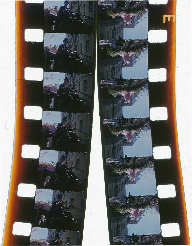
Double 8 mm prior to slitting.
After slitting -
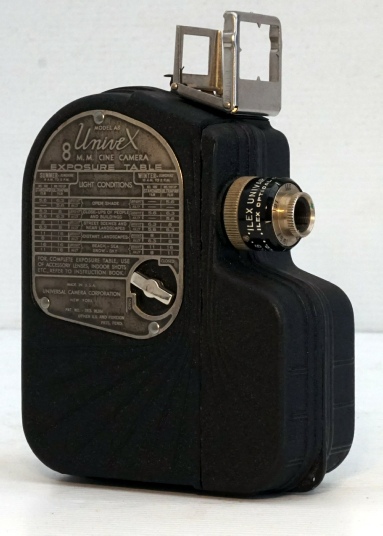
Several manufacturers produced single run 8 mm cameras, most used systems developed within the company and the issue of compatibility with other cameras was not a high consideration.
The Univex single run 8 mm system was developed by the Universal Camera Corporation of New York City, (not to be confused with the Universal Camera Co of Chicago, makers of professional 35 mm equipment).
A number of cameras and projectors were manufactured; the first camera was the model A8 (at left) c. 1936, to the H8 in the late 1940s. The A8 is a single speed (16 fps) clockwork driven camera. Its odd shape does not enhance its ease of use, but it did have facilities for a tripod mount. The lens aperture of F5.6, together with the slow emulsion of the black and white films of the day, would have made this a ‘sunny day’ camera.
The single run 8 mm black and white film came on a 30-
Univex also made an 8 mm projector: This was a fairly basic unit, incorporating a single claw pull-
It had a maximum film capacity of 200 feet -
The Univex camera, showing the odd shape.
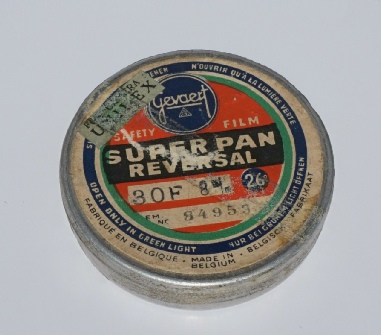
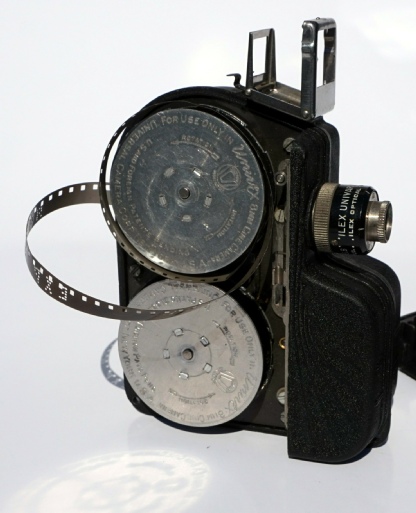
Side removed, showing 30 ft reel of film.
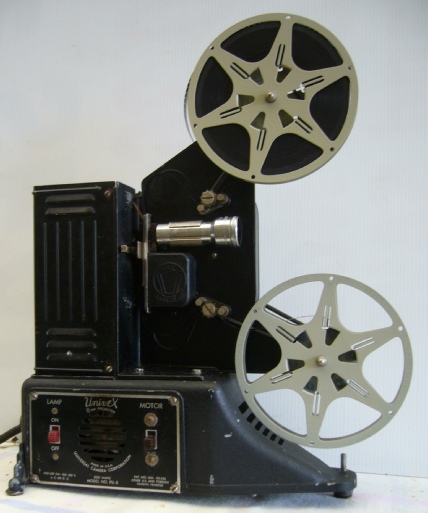
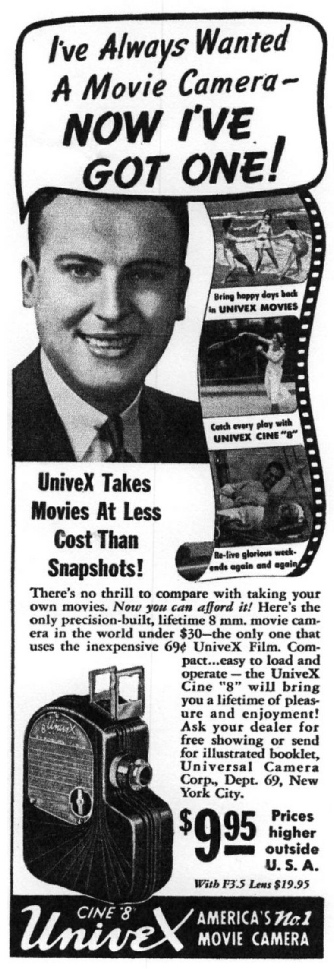
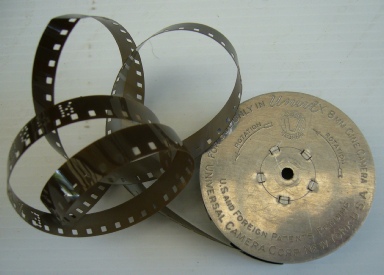

All images shown are of items in the author’s
Collection.
© Mike Trickett Geelong Australia
When Eastman Kodak introduced the 8 mm film system in 1932, it was based on 16 mm film. The film intended for 8 mm use was 16 mm wide and perforated on both edges at the 8 mm pitch and generally came in 25 ft lengths.
The cameras were designed to expose one side of the film only, at the end of the 25 ft run, the film was reloaded into the camera in such a way that the other half of the film was then exposed. The end result was two rows of images side by side, one upside down to the other. At the processing lab, the film was slit down the centre and the two halves joined together, giving 50 ft of 8 mm film.
Kodak had a good reason for this procedure – 8 mm films could be processed on their existing 16 mm processing equipment, avoiding the need for specialized 8 mm processors.
The need to remove the film and reload it after the first 25 feet run (often in bright sunshine), together with the usual ‘oops!’ factor, meant that at the half way mark there may be a substantial amount of the film wasted due to poor handling. The possibility of the film being threaded wrongly for the second run through, and double exposing the same side was taken care of by the reels having 3 shaft notches on one side and two on the other.